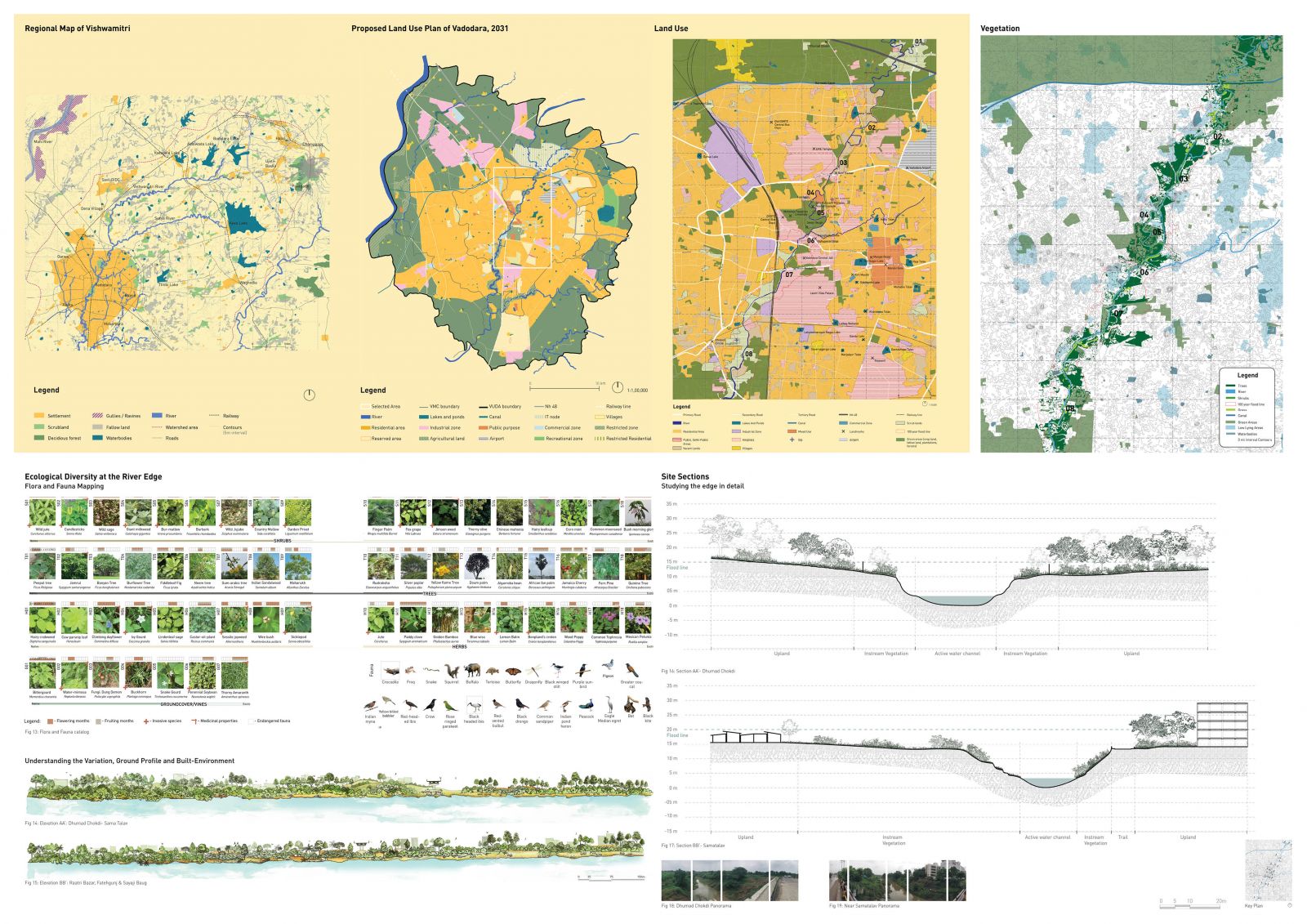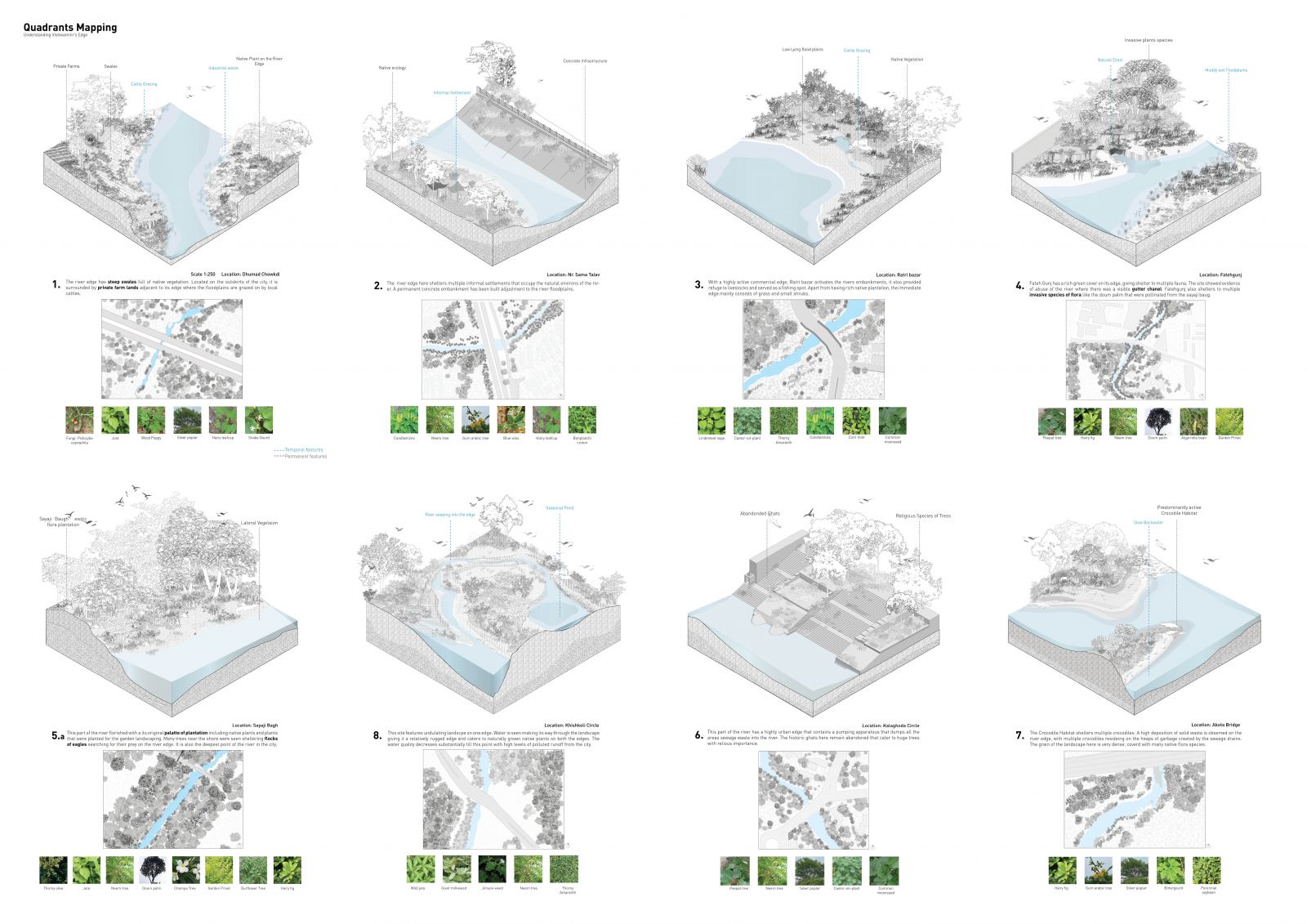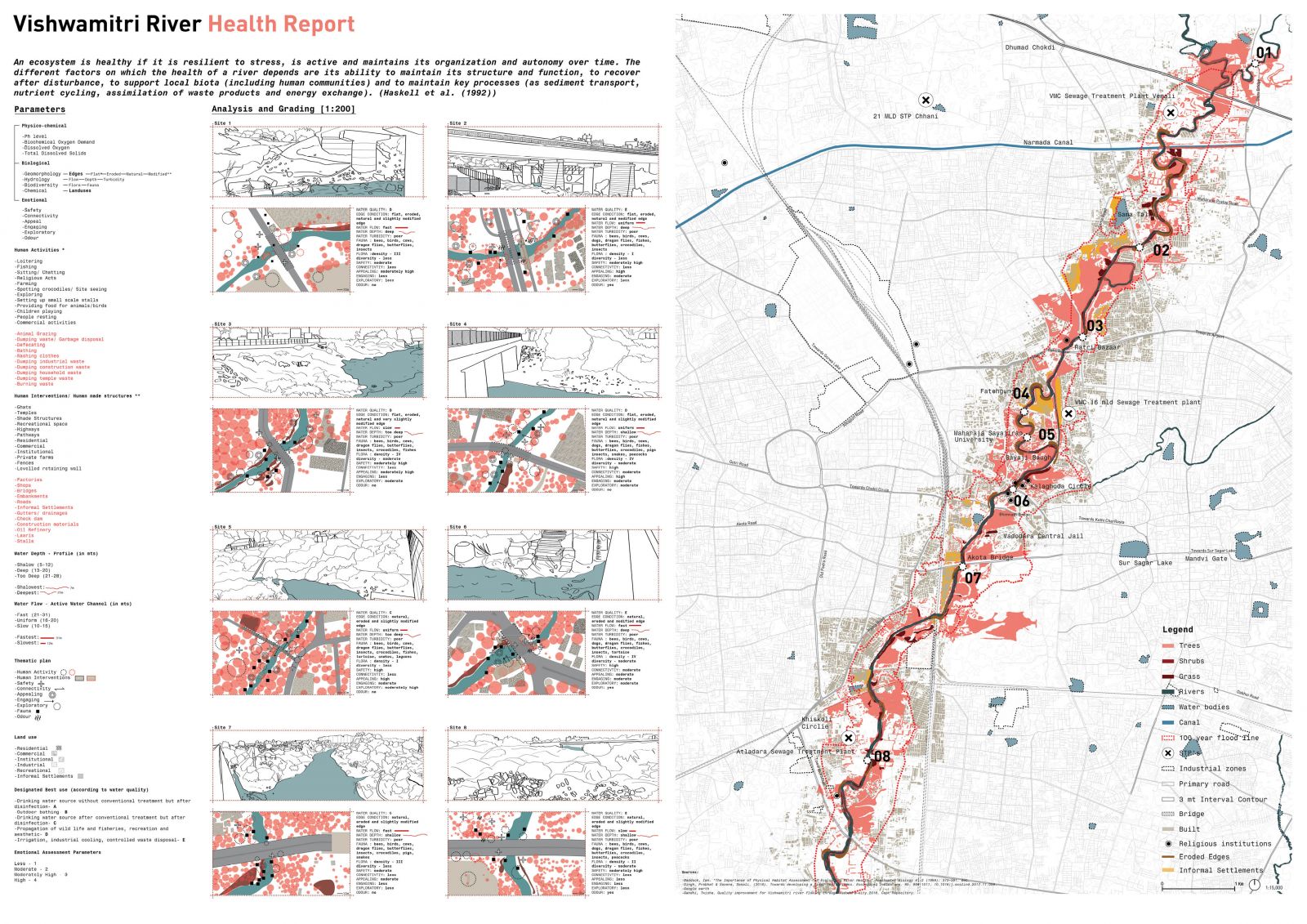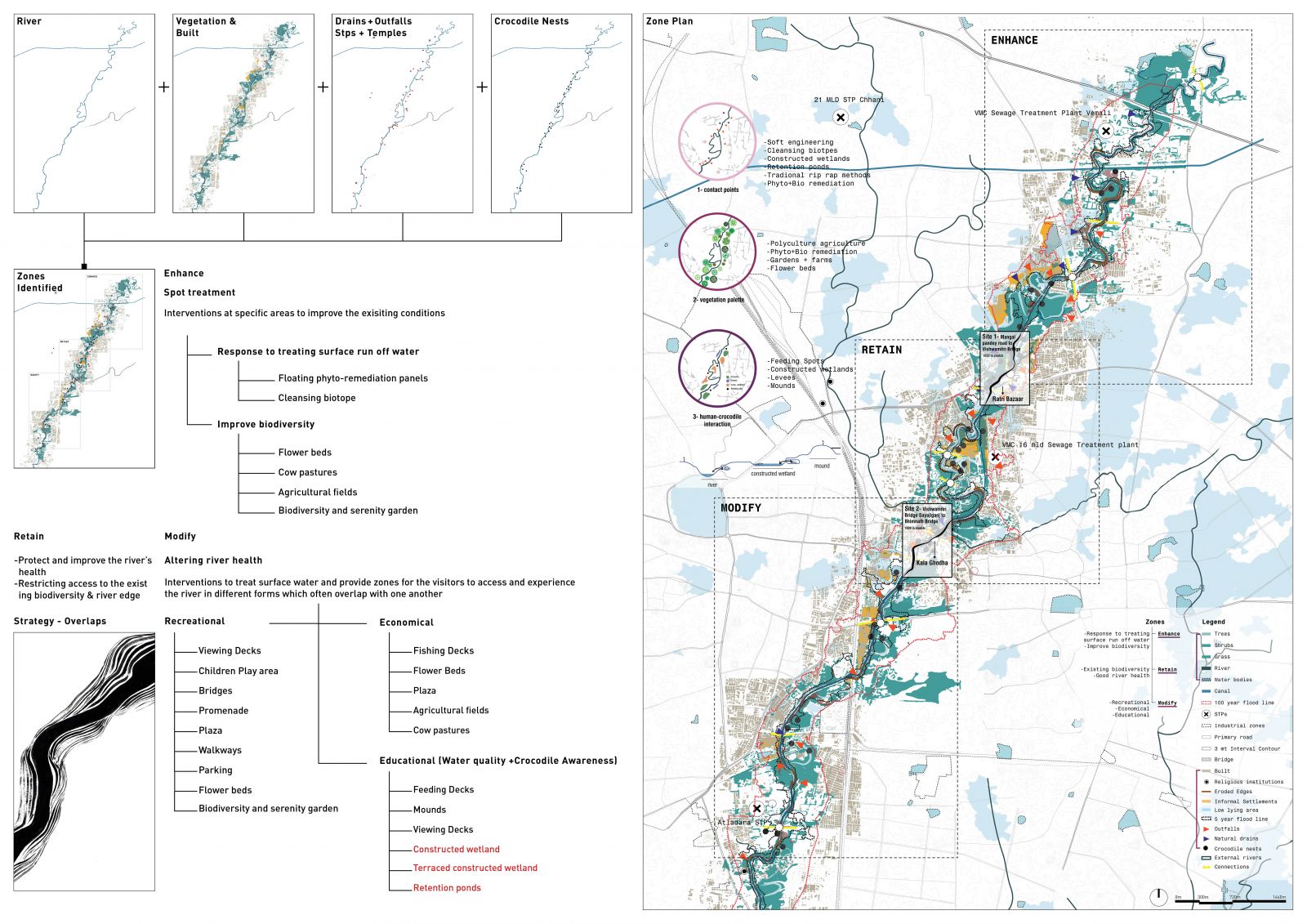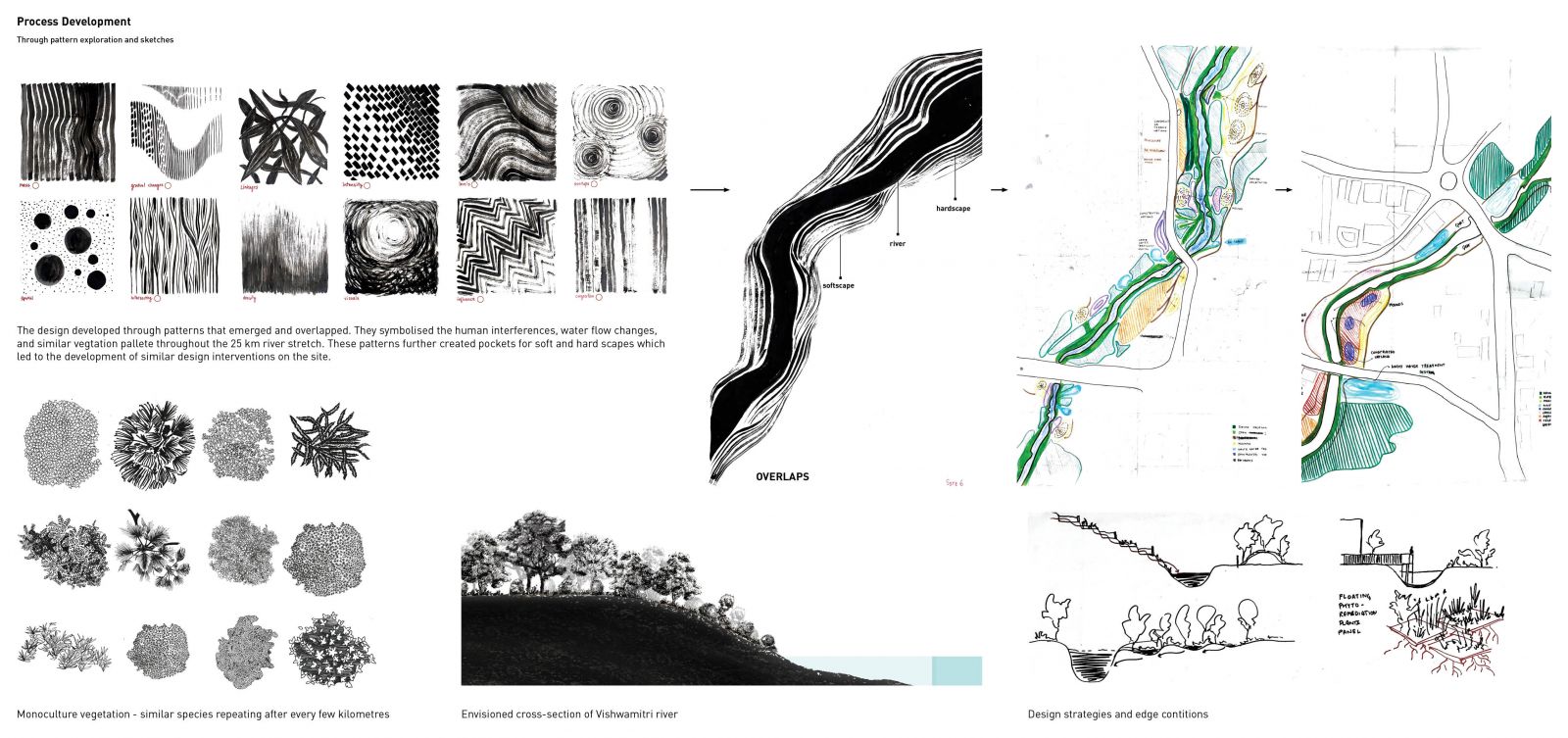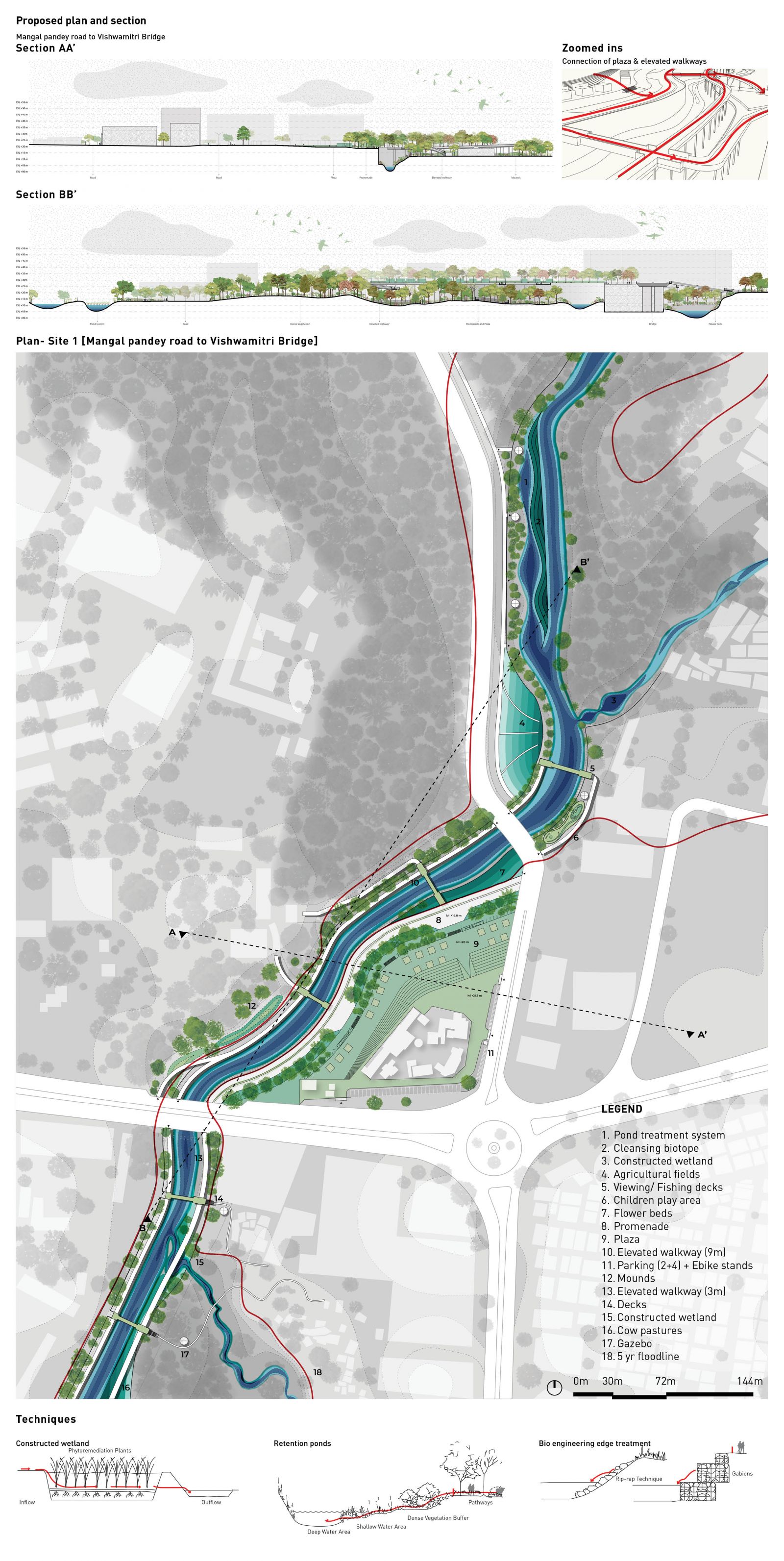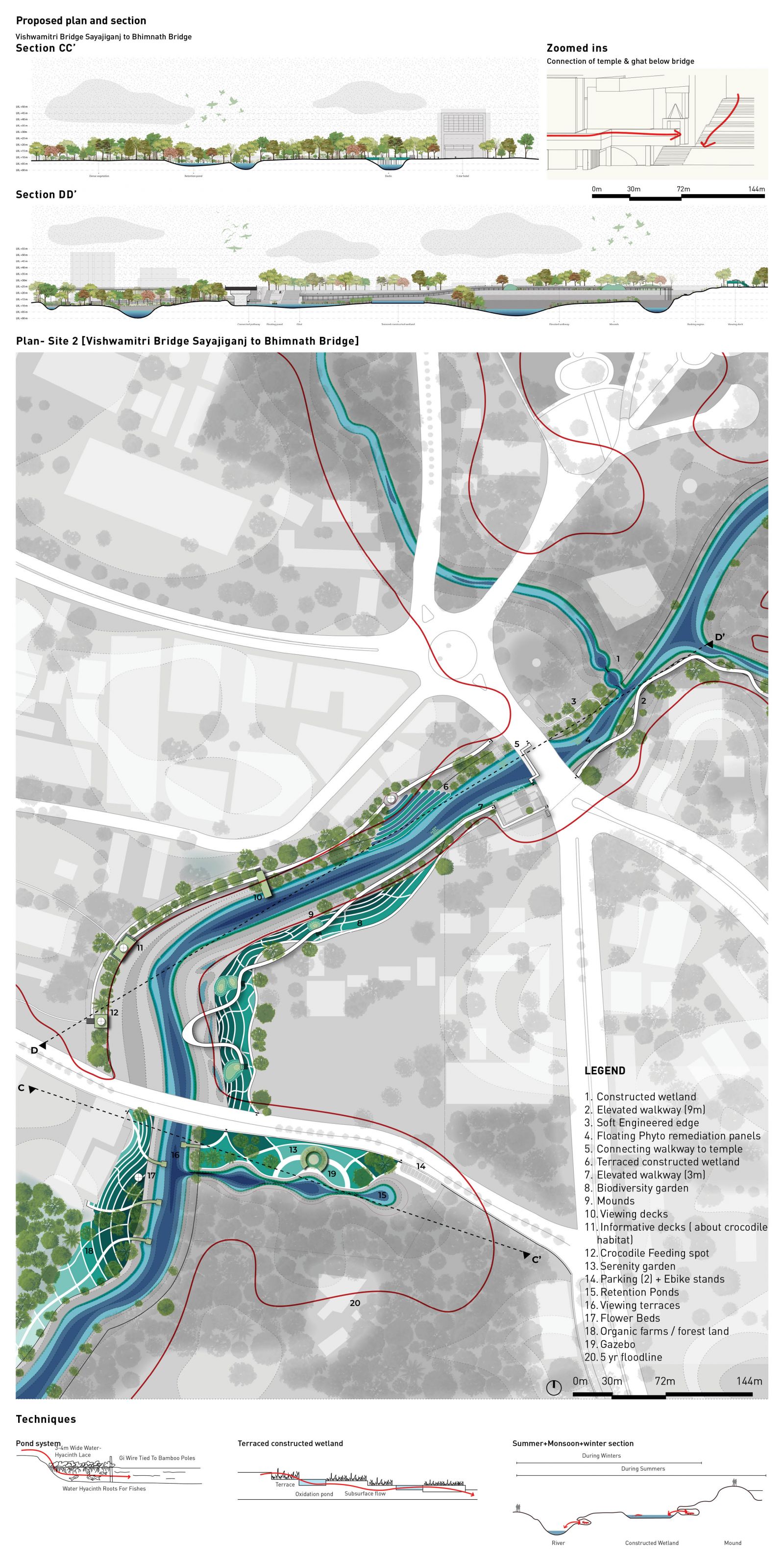Your browser is out-of-date!
For a richer surfing experience on our website, please update your browser. Update my browser now!
For a richer surfing experience on our website, please update your browser. Update my browser now!
Vishwamitri river is a strong support system for the biodiversity thriving around it. Even though it is a nonperennial river, there are elements such as human interferences, water flow changes, and similar genres of vegetation that indicate that the river is a continuous and connected stretch of water. The river’s health is severely poor at many points due to its neglected treatment by the citizens. The aim of this project is to improve river health by altering the physicochemical (water quality), biological (edge condition and land use), and emotional (human experience) aspects. Through the findings of river health assessment, zones to retain, enhance and modify are formulated and overlapped with the mapped factors affecting the river’s health. Factors such as drains and stormwater contact points, monoculture vegetation with dominant invasive species, and human-crocodile interaction are mapped. Through this process, areas in need of improvement are identified and strategies such as treating surface runoff water where it meets the river, reworking the vegetation palette to make it more dense and diverse, and improving interactions between humans and biodiversity(crocodiles) are followed.
View Additional Work
